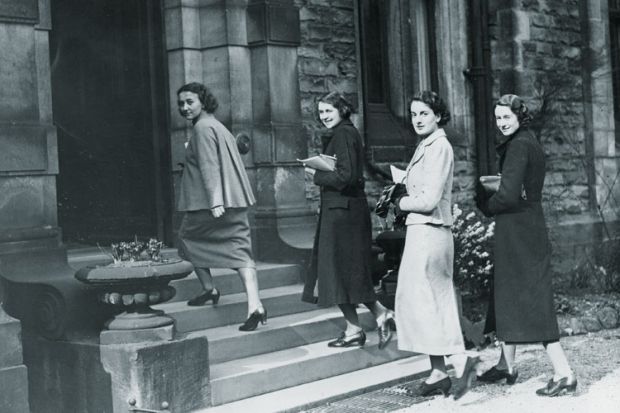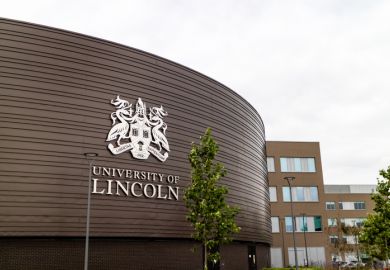In the 1920s, the Conservative prime minister Stanley Baldwin hailed the redbrick universities, the civic institutions founded mainly in the cities of the Midlands and the North in the Victorian and Edwardian eras. They were, he said, a development “which historians of the future would regard as a Renaissance…as genuine and as pregnant in its possibilities as the Renaissance of the fifteenth century”.
As it turns out, the “historians of the future” did not fulfil this prediction. William Whyte, professor of social and architectural history at the University of Oxford, bills his new book, Redbrick: A Social and Architectural History of Britain’s Civic Universities, as the first on the subject since 1955.
“This has become an almost forgotten revolution, a Renaissance that nobody now notices,” he writes of the redbrick institutions.
What we have lost thanks to historians’ neglect of these institutions, in his argument, is a sense of how the redbrick universities opened up higher education to people of all religions, to women, to different social classes; how they shaped subsequent waves of higher education expansion in the 1960s and 1990s and indeed shaped the entire character of British higher education as we know it.
Speaking to Times Higher Education, Professor Whyte said: “Not a month goes past, or seems to go past, without another book on Oxford or Cambridge. In a way, historians have been a bit like contemporary politicians or a lot of journalists in the broadsheets, who have an obsession with Oxford and Cambridge. That’s affected what historians have written about.”
The term “redbrick university” comes from the title of a 1943 book by Bruce Truscot, the pseudonym of Edgar Allison Peers, professor of Spanish at the University of Liverpool. The phrase came from his description of the institution’s Victorian buildings, although he later explained that he intended his book to describe all Britain’s “modern” universities.
Professor Whyte said that Truscot’s term “describes the late 19th, early 20th-century foundations”: including Liverpool, Manchester, Leeds, Birmingham, Bristol, Sheffield, Newcastle, as well as Dundee “and the Welsh universities” beyond England.
The book argues against historians who have “tended to conclude that redbrick was nothing more than a pale and failed imitation of Oxbridge”. Instead, it makes a case for the “distinctiveness” and influence of the redbricks.
Distinctively local and open
What was distinctive about them? From foundation, these are “institutions which are local and are embedded in their communities and which have connections with their communities”, Professor Whyte said.
Yet at the same time, they are “always seeking national recognition as well” and are aiming to be “part of a national network of universities”, he added.
He continued: “These were always institutions that were intended from the get-go to be open to as wide a [student] constituency as they possibly could. They didn’t always succeed in that.
“But the notion that these would be universities that were open to people of all religions…open to people of both genders, that these were universities that were always trying to encourage local people who wouldn’t otherwise have got to university to come to them – that’s something that they really retain for decades after their foundation.”
Although not a redbrick university itself, the book describes the foundation of University College London in 1826, the first institution to be successfully established in England since the University of Cambridge in 1209. Key factors in the drive to set up UCL were the narrowness of the curricula and the exclusivity of admissions at Oxbridge, principally in limiting access to Anglicans.
Later, in 1851, came Owens College, Manchester, subsequently to become University of Manchester. The founding bequest from John Owens stated that the college’s education must contain no “reference to any religious or theological subject which shall be reasonably offensive to the conscience of any student, or of his relations, guardians, or friends”.
As it grew, Manchester’s promoters believed that the institution would be “shaped by local needs, local benefactors, and local government”, writes Professor Whyte.
Mixed funding shared between benefactors, often from local industry, and local government was typical in the early history of the redbricks.
“What my book attempts to show is that these institutions had no intention of imitating Oxford and Cambridge,” said Professor Whyte. Their architecture is a key reflection of this, he added, as the “form they assume reflects…that what they are doing is being civic structures in the middle of a city” rather than “aping” Oxbridge.
In his view, the redbricks established a model that “works so well” that it “inspires every subsequent wave of university foundation, be it the Sixties universities…or even more importantly the way in which the polytechnics turned themselves into universities”.
They have also influenced the government funding model for higher education and the creation of an academic profession, he added.
“It’s because of the redbrick universities that the government starts paying grants to universities, which then becomes the University Grants Committee, which now has become Hefce [the Higher Education Funding Council for England].
“They [the redbricks] are the cradle for the modern university system. It’s not Oxford and Cambridge.”
Much of this is down to their character as “municipal universities”, Professor Whyte added. But there are “problems that come with that; they are founded by the middle class for the middle class,” he continued. “It’s not all good.”
Although they may have lacked the religious exclusivity or the same degree of social exclusivity that Oxford and Cambridge once had, the redbricks were “bourgeois universities from the first”, he writes.
Have the redbricks changed the character of Oxbridge? “Without a shadow of a doubt,” replied Professor Whyte. “They change Oxbridge because they provide that model of entry to everyone.”
More broadly, he argued, “student life in Oxford now is much more like student life in the civic universities…It’s not that the people in the civic universities are trying to ape Brideshead, it’s that Brideshead is having to keep up with redbrick.”
Neglected stories
To some extent, Professor Whyte believes, the attitude of some universities to their own past is a factor in their neglect by historians.
During his research for the book, he encountered one university that “told me they wouldn’t show me anything unless I made a Freedom of Information request, which was quite surprising”.
And at another university, he added, “I was the first person, as far as they could tell, who had ever used their archive. They bought me a visitors’ book especially; it was really very nice.”
Did he enjoy the experience of travelling to the UK’s universities to research the book? “One of the reasons I wanted to write this book is that, rather pathetically, I’ve been in Oxford the whole of my adult life,” Professor Whyte said.
“Doing research for this was like being on a decade-long open day – I got to see all the other places I could have gone to and experience a little bit of the life I could have been leading.”
Professor Whyte’s book is an argument for the important place of the redbricks, and their successors, in national life – whether any “historians of the future” join him remains to be seen.
POSTSCRIPT:
Print headline: The model of a modern institution
Register to continue
Why register?
- Registration is free and only takes a moment
- Once registered, you can read 3 articles a month
- Sign up for our newsletter
Subscribe
Or subscribe for unlimited access to:
- Unlimited access to news, views, insights & reviews
- Digital editions
- Digital access to THE’s university and college rankings analysis
Already registered or a current subscriber? Login




